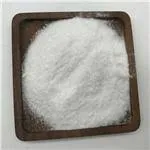non chemical treatment for cooling towers
Cooling towers are an essential component in various industries, playing a pivotal role in regulating temperature by dissipating excess heat through evaporation. However, maintaining these towers can be challenging, particularly when considering the build-up of scale, corrosion, and microbial growth, which can impair efficiency and longevity. Traditionally, chemical treatments have been the go-to solution for these issues, but they pose environmental concerns and budgetary burdens. Recently, innovative non-chemical treatment methods have emerged as sustainable and cost-effective alternatives, offering industries a new avenue for maintaining cooling tower systems.
One of the most promising non-chemical treatment technologies is the use of physical water conditioners, which alter the properties of water to prevent scale formation and biofouling. These systems often utilize magnetic or electronic fields to modify the behavior of minerals and biological organisms in the water. By doing so, they inhibit the ability of calcium carbonate and other scale-forming substances to crystallize and adhere to surfaces. This not only extends the lifespan of the cooling tower but also enhances its performance and efficiency.
In addition to physical water conditioners, ultraviolet (UV) disinfection systems have gained traction as reliable non-chemical treatments. UV systems work by exposing water to UV light, which effectively damages the DNA of bacteria and other microorganisms present in the water. This method significantly reduces biofilm formation, which is a major contributor to reduced heat exchange efficiency. UV disinfection is advantageous due to its ability to target a broad spectrum of microorganisms without introducing harmful chemicals into the water system.
Furthermore, ultrasonic treatment is another innovative option gaining popularity. By generating high-frequency sound waves, ultrasonic systems can disrupt the cellular structures of algae and bacteria, preventing their growth and proliferation. This method is particularly effective in tackling biofouling and works synergistically with other non-chemical treatments, offering a comprehensive solution for cooling tower maintenance.non chemical treatment for cooling towers
Electrolytic scale control devices are also worth mentioning. These devices use an electric current to precipitate scale-forming minerals such as calcium and magnesium ions from the water. As these ions clump together and form a precipitate, they are easily removed from the system through filtration. This technique not only minimizes scale accumulation but also contributes to water conservation efforts by reducing the need for cleaning cycles and water replacement.
When considering the implementation of non-chemical treatment technologies, it's crucial to evaluate the specific needs and characteristics of your cooling tower system. Factors such as water chemistry, system design, and environmental conditions can influence the efficacy of each method. Consulting with an expert in cooling tower maintenance can provide valuable insights and help tailor a solution that aligns with operational goals and sustainability targets.
While non-chemical treatments present numerous advantages, their success greatly depends on proper installation and regular monitoring. Establishing a maintenance schedule that includes routine inspections and performance assessments is key to ensuring these systems function optimally. Moreover, staying informed about advancements in non-chemical treatment technologies allows for continuous improvement and adaptation, keeping your cooling tower in peak condition.
In conclusion, shifting towards non-chemical treatments for cooling towers represents a forward-thinking approach that aligns with modern sustainability efforts. These innovative technologies not only reduce environmental impact but also enhance operational efficiency and cost-effectiveness. Embracing these solutions offers industries an opportunity to maintain their cooling tower systems responsibly, safeguarding both their investment and the environment.
More product recommendations



